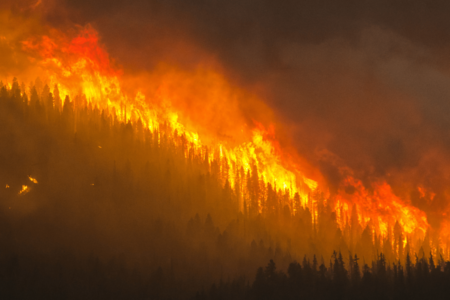Flathead far from protected despite legislation: Conservation groups
Legislation to ban mining and energy development in B.C.’s Flathead River Valley is a welcome first step but the Flathead remains far from protected, conservation groups said today.
“This legislation does not protect the Flathead from logging in a proposed National Park, trophy hunting, new road access and quarrying,” said Casey Brennan, Southern Rockies program manager for Wildsight.
“Preventing mining and oil and gas development is a great first step, but real conservation is permanent protection as a national park and wildlife management area.”
The B.C. government introduced legislation recently — called the Flathead Watershed Area Conservation Act — that it promised after it announced a ban on mining and energy development in the Flathead.
The ban followed a petition to the World Heritage Committee from 11 conservation groups, including Wildsight, Sierra Club BC and the Canadian Parks and Wilderness Society.
“This long-promised legislation inks what was previously in pencil – the important ban on mining and energy development in the Flathead,” said Sierra Club spokesperson Sarah Cox. “No other conservation efforts appear to be included in this act.”
“We’re puzzled that the B.C. government states in its press release that the Flathead is a World Heritage Site and UNESCO Biosphere Reserve,” said CPAWS BC spokesperson Chloe O’Loughlin.
“If the Flathead receives the same high level of protection as the adjoining Waterton-Glacier International Peace Park it would certainly merit this designation, but right now B.C.’s Flathead is almost completely unprotected, while Waterton and Glacier are both national parks.”
Sierra Club BC, CPAWS and Wildsight are calling for B.C. to follow the lead of Alberta and Montana and agree to a national park in the southeastern one-third of the Flathead, to fill in the missing piece of Waterton-Glacier International Peace Park.
The groups are also calling for a Wildlife Management Area in the rest of the Flathead Valley and adjoining habitat, in keeping with recommendations made last year by a World Heritage Committee mission to the Flathead.
Flathead Watershed Area Conservation Act
The Flathead Watershed Area Conservation Act was introduced Wednesday.
The Flathead, in the East Kootenays, neighbours the Waterton Glacier International Peace Park. Waterton Glacier International Peace Park is listed by UNESCO as a World Heritage Site and Biosphere Reserve.
The introduction of legislation is part of the commitment made in the 2010 memorandum of understanding signed with the state of Montana on Environmental Protection, Climate Action and Energy.
The act, when passed and brought into force, will secure decisions made in 2010 to:
- Establish coal and mineral reserves.
- Prohibit Crown land dispositions for mining purposes.
- Prohibit issuance of Mines Act permits.
- Prohibit issuance of Oil and Gas Activities Act permits for oil and gas exploration and development.
- Prohibit disposition of Crown reserves under the Petroleum and Natural Gas Act.
Parallel legislation has been introduced in the United States Senate to similarly remove mining, oil, and gas as permissible land uses in the Montana North Fork Flathead Basin, which neighbours B.C.’s Flathead valley.
More than 80 per cent of existing oil and gas leases have already been retired in the area in the United States.
Quick facts
The Flathead River is one of North America’s last wild rivers, and the area supports a variety of animals and a diverse collection of plants and fish.
For more than 70 years, the B.C. Flathead Watershed Area has been successfully managed for logging, recreation, guiding and outfitting and trapping, and has maintained the healthy and diverse eco-system that exists today.
The February 2010 memorandum of understanding with the state of Montana on Environmental Protection, Climate Action and Energy was witnessed by representatives on the Ktunaxa Nation Council and the U.S. Confederated Salish and Kootenay Tribes.
Under the February 2011 Agreement on the Protection of the Transboundary Flathead Watershed Area, the Nature Conservancy of Canada and The Nature Conservancy in the U.S. will contribute $9.4 million to assist implementation of the environmental protection provisions of the MOU, including compensation for current coal and mineral tenure holders.
Learn more
- To view the Memorandum of Understanding and Cooperation on Environmental Protection, Climate Action and Energy in full, go to: http://www.newsroom.gov.bc.ca/downloads/mou_final_BC%20Montana%20Environmental%20Agreement%20Flathead.pdf


























Comments